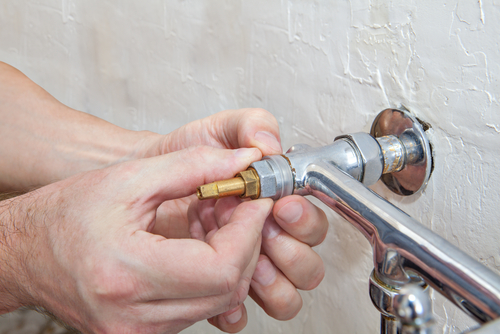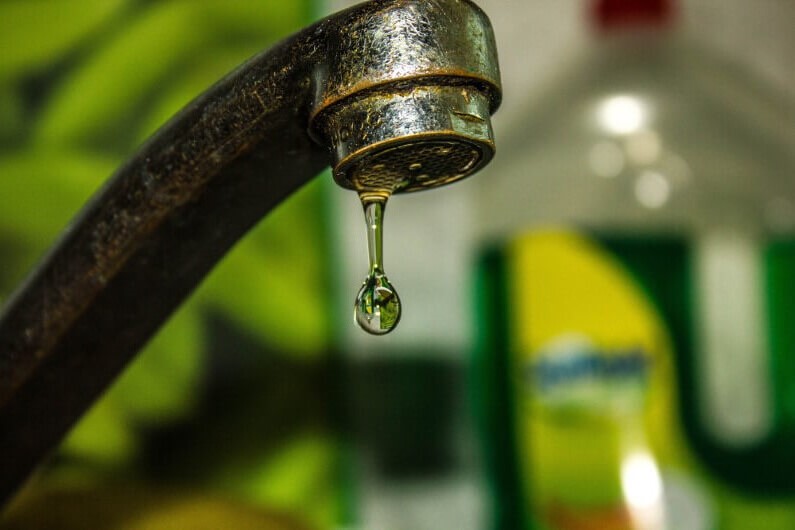Understanding the Significance of Correcting a Malfunctioning Faucet
Understanding the Significance of Correcting a Malfunctioning Faucet
Blog Article
Have you been searching for critical information around Why It's Important to Fix Leaky Faucets?

Trickling faucets may seem like a minor aggravation, however their influence goes beyond just the nuisance of the audio. From wasting water to incurring unneeded economic expenses and health and wellness risks, disregarding a leaking faucet can bring about numerous consequences. In this post, we'll delve into why it's crucial to resolve this usual home problem quickly and properly.
Wastage of Water
Environmental Impact
Dripping taps add substantially to water wastefulness. According to the Epa (EPA), a single faucet trickling at one drip per secondly can lose greater than 3,000 gallons of water per year. This not just pressures water resources however also impacts communities and wildlife depending on them.
Financial Expenses
Raised Water Bills
Past the environmental impact, trickling faucets can pump up water bills substantially. The gathered wastage with time equates into greater energy expenses, which might have been prevented with prompt repair services.
Prospective Residential Or Commercial Property Damage
Moreover, prolonged trickling can result in damage to components and surfaces surrounding the tap. Water build-up can cause discoloration, rust, and even architectural problems if left neglected, resulting in added repair work prices.
Health and wellness Concerns
Mold And Mildew and Mold Development
The continuous visibility of moisture from a leaking tap produces an excellent environment for mold and mildew and mildew development. These fungi not only jeopardize interior air quality however likewise posture health and wellness dangers, particularly for individuals with respiratory system problems or allergies.
Waterborne Illness
Stationary water in leaking taps can become a breeding place for germs and various other microorganisms, boosting the danger of waterborne illness. Impurities such as Legionella microorganisms prosper in stationary water, potentially resulting in serious illnesses when consumed or breathed in.
DIY vs. Professional Repair
Pros and Cons of DIY Repair
While some might attempt to fix a leaking faucet themselves, do it yourself repair work feature their very own set of difficulties. Without correct knowledge and tools, DIY attempts can worsen the concern or bring about incomplete repair work, extending the issue.
Advantages of Hiring a Professional Plumber
Hiring an expert plumber makes sure that the underlying root cause of the leaking tap is resolved properly. Plumbers have the proficiency and equipment to detect and fix tap concerns successfully, saving time and decreasing the threat of additional damage.
Step-by-Step Overview to Fixing a Dripping Tap
Tools Required
Prior to attempting to fix a trickling faucet, gather the essential tools, including a flexible wrench, screwdrivers, replacement components (such as washers or cartridges), and plumber's tape.
Common Tap Issues and Their Solutions
Identify the kind of faucet and the certain issue triggering the drip. Usual troubles include damaged washers, corroded shutoff seats, or faulty O-rings. Describe supplier instructions or on the internet tutorials for detailed guidance on repair services.
Preventive Measures
Routine Upkeep Tips
To avoid leaking faucets, carry out regular maintenance such as cleaning aerators, checking for leaks, and replacing worn-out parts immediately. Additionally, take into consideration installing water-saving gadgets or updating to much more effective components.
Importance of Prompt Fixes
Attending to dripping taps as quickly as they're noticed avoids additional water waste and possible damage, inevitably saving both water and money in the long run.
Impact on Building Worth
Assumption of Well-Maintained Building
Maintaining a property in good condition, including attending to maintenance concerns like leaking taps, enhances its viewed worth and desirability among possible purchasers or tenants.
Influence on Resale Value
Properties with well-kept plumbing components, consisting of taps, command greater resale worths in the real estate market. Addressing leaking faucets can contribute to a favorable impact throughout property evaluations and negotiations.
Ecological Duty
Individual Payment to Preservation
Taking responsibility for taking care of trickling faucets lines up with more comprehensive efforts toward water conservation and ecological sustainability. Every person's activities jointly make a significant impact on preserving valuable resources.
Sustainable Living Practices
By prioritizing punctual repairs and adopting water-saving habits, people add to lasting living techniques that profit both present and future generations.
Final thought
Dealing with a leaking faucet surpasses plain comfort; it's a vital action towards saving water, minimizing monetary costs, and guarding wellness and building. Whether with DIY repairs or specialist help, acting to deal with leaking taps is a little yet impactful means to promote liable stewardship of resources and add to a much healthier, a lot more lasting future.
How to Fix a Leaky Faucet: Step-by-Step Repair Guide
A leaky faucet may seem like a simple annoyance, but if it's not fixed promptly, that leak could cost hundreds to potentially thousands. From water damage to mold, mildew, and high water bills, even a tiny leak can be catastrophic if left unattended. Damage like this can even affect the overall value of your home, so it's important to take the right approach for leaky faucet repair. You may need the help of a plumber in some cases, but we've got a few tips you can try on how to fix a leaky faucet before calling the pros.
Four Faucet Types
When you're learning how to fix a leaky faucet, the first step is knowing what kind of faucet you're working with! There are four common types.
Cartridge Faucets
Cartridge faucets come in one- or two-handled varieties. In one-handled cartridge faucets, hot and cold water combines in a single cartridge. In the two-handled versions, hot and cold water are controlled separately and mixed in the faucet.
Ball Faucets
Ball faucets have a single lever you push up and down to adjust the pressure and rotate to change the temperature. A slotted metal ball controls the amount of water allowed into the spout.
Compression Washer Faucets
They're the oldest type of faucet, but they're still used in many homes — especially older ones. Compression faucets have two separate handles that, when turned, raise or lower the washer that seals a water valve. This valve stops water from flowing through the faucet when it is turned off.
Disc Faucets
Disc faucets rarely need to be repaired due to their maintenance-free design. The water flow is controlled by two discs — the upper one raises and lowers against a fixed lower disc, creating a watertight seal. If your disc faucet starts leaking, you may need to replace the seals or clean residue buildup from the inlets.
Fixing a Leaky Faucet
Step 1: Turn Off the Water
Whether you're learning how to fix a leaky bathtub faucet or how to fix a leaky kitchen faucet, always turn off the water supply to your working area when you're fixing a leak. The last thing you want is a flood added to your list of things to fix.
Look for the shutoff valves below your sink or around the tub and turn them clockwise to stop the water flow. If your faucet doesn't have shutoff valves, you may need to turn off the water for the whole house. Check to make sure it's off by turning the faucet on. If nothing comes out, you're ready to start the repair.
Step 2: Take Apart the Faucet
How you disassemble your faucet depends on the type of fixture you have. You can use a flathead screwdriver to remove the caps on top of the handle or handles for cartridge and compression faucets. Inside, you should see handle screws. Unscrew these with a screwdriver to remove the handle.
Disc- and ball-style faucets will typically have an inlet screw near the handle, and removing that will reveal the interior of the faucet.
Detach the Valve Stem
For cartridge- and compression-style faucets, you'll see the inner valve stem or cartridge once you remove the faucet handles. If you have a compression faucet, unscrew the brass valve stem. If you have a cartridge faucet, pull out the cartridge. If your cartridge has been in place for a while, it may require some tools or extra force to remove it due to mineral deposits.
Examine and Replace Parts
Once you've removed the parts, check them out to confirm what needs to be replaced. You may see corroded rubber washers, O-rings, stems, or cartridges. On a ball-style faucet, check the seats and springs for damage.
If you need to repair a leaky disc faucet, check the inlet and seals on the lower disc.
Once you determine what parts must be replaced, visit your local hardware store. Bring the damaged parts with you to ensure you can purchase the correct components to replace them.
Clean Valves and Faucet Cavity
If you've removed a stem or cartridge, you may notice mineral buildup in the faucet's threads. Use white vinegar to clean the valve seat by soaking it for a few minutes, then scrub it away with a soft toothbrush and rinse with warm water. You can also clean the interior of the faucet in the same way.
Reassemble the Faucet
Once your faucet is cleaned and the required parts have been replaced, it's time to reassemble it. Put the pieces back together and slowly turn the water supply back on. Doing this slowly is crucial because too much initial water pressure can damage the new hardware you've just installed.
https://homewarranty.firstam.com/blog/how-to-fix-leaky-faucet

Do you enjoy reading about Should I Repair or Replace a Leaky Faucet?? Create a remark further down. We would be delighted to see your thinking about this posting. We are looking forward to see you back again later on. Loved our blog? Please share it. Help someone else discover it. Thanks a lot for going through it.
Report this page